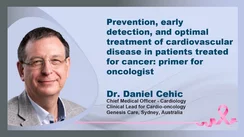Modifiable Risk Factors Responsible for the Global Burden of Cancer – A Systematic Analysis for the GBD 2019

Modifiable Risk Factors Responsible for the Global Burden of Cancer – A Systematic Analysis for the GBD 2019
Cancer-causing deaths are increasing across the world. In 2020, nearly 10 million deaths have been caused due to cancer in the world. One in six deaths is because of cancer as stated by WHO.1 This cancer mortality rate is remarkably high and proper steps should be initiated to reduce the risk of developing cancer at any stage of life. There is a need to understand the importance of attributable modifiable risk factors that are responsible for increasing the burden of cancer.
The Global Burden of Diseases, Injuries, and Risk Factors Study (GBD) 2019 is an initiative to identify the modifiable risk factors to improve the cancer-related health system initiated by the Bill & Melinda Gates Foundation. The disease burden caused due to various cancer-attributable risk factors such as behavioral, environmental, occupational, and metabolic factors were compared and analyzed based on the GBD 2019 comparative risk assessment framework. This study focuses on the overall cancer deaths and disability-adjusted life-years (DALYs) and the measures that were implemented between 2010 and 2019.
In 2019, the risk factors accounted for 4.45 million (44.4%) deaths and 105 million (42.0%) DALYs in both males and females. There were approximately 2.88 million males (50.6%) and 1.58 million females (36.3%) who died of risk-attributable cancer. This shows that half of cancer deaths across the world are due to modifiable risk factors. The data from 2010 to 2019 on cancer deaths and DALYs can lead to improved prevention planning. The GBD 2019 evaluated 82 risk-outcome pairs (23 cancer types and 34 risk factors), which were based on the World Cancer Research Fund criteria. Socio-demographic Index (SDI) based on the socio-demographic development was utilized to provide selected results based on the differences in cancer burden attributable to risk factors across the boundaries.
The data sources for the cancers included in the GBD 2019 were from the 10th revision of the International Classification of Diseases (ICD-10), and the data source for cancer estimates was procured from the vital registration systems that record the essential information of the citizens, verbal autopsy reports to collect the information related to the cause of death, and the national and subnational population-based registries. A comparative risk assessment framework was developed to calculate the fractions of the cancer-specific attributable risk factors that comprised six steps: (1) The various risk factors were recognized by the World Cancer Research Fund Criteria; (2) Systematic studies and meta-analyses were performed for the estimation of risks related to each outcome pair; (3) The risk factor exposure level and distributions were designed for individual age, sex, location, and year; (4) The theoretical minimum risk exposure level was recognized for each risk factor; (5) The population attributable fraction was calculated for individuals with different age, sex, location, and year; and (6) The population attributable risk factors were combined with other risk factors.
According to statistics, tobacco is the most prominent level 2 risk factor that accounted for 33.9% of the cancer DALYs in males and 10.7% in females. In the estimated risk factors for both males and females between 2010 and 2019, the overall attributable cancer deaths increased by 20.4% and 16.8% in terms of DALYs. There was a drastic change observed in the metabolic risk factors in terms of cancer deaths and DALYs. The level 1 metabolic risk factor estimated between 2010 and 2019 increased by 34.7% and 33.3% in the attributable cancer deaths and DALYs, respectively. In terms of metabolic risk factors, there was an increase of 2.8% and 3.8% in the risk-attributable cancer age-standardized death and DALY rates, respectively. The leading risk factors in the high SDI were smoking, alcohol abuse, and high BMI, whereas in the low SDI, smoking was the leading risk factor followed by unsafe sex and alcohol abuse.
The findings concluded that proper actions against behavioral risk factors can reduce the burden of cancer-causing deaths. As most cancer DALYs result from alcohol abuse, smoking, unsafe sex, and dietary risks, these behavioral factors can be controlled. The results of the GBD 2019 study exhibited an increased percentage of attributable cancer deaths to risk factors. Behavioral risk factors, especially smoking and alcohol and unsafe sex in the lower income groups, have contributed the most to global cancer deaths. The social factors responsible for health such as proper education and decreasing the poverty burden may reduce certain risk factors.
This study was carried out before the COVID-19 pandemic and hence many factors like the impact of COVID-19, economic status, and viral infections were not taken into consideration under risk factors. All countries should maintain population-based registries, which is important for the estimation of cancer burden globally. Even with these limitations, GBD 2019 is the largest effort made to estimate the burden of the worldwide spread of cancer.
References:
Tran KB et al. The global burden of cancer attributable to risk factors, 2010–19: a systematic analysis for the Global Burden of Disease Study 2019. Lancet 2022;400:563–591.
Disclaimer: The Views/Opinions expressed and/or opinions provided in Videos and other content on MedEnrich Website are those of respective speakers. They do not purport to reflect the opinion or views of Dr.Reddy’s Laboratories Limited or its affiliates (collectively Dr.Reddy’s)in any manner whatsoever and accordingly ,Dr.Reddys does not recommend , endorse or make any representation about the veracity and appropriateness of the views ,opinions/ information on MedEnrich website. Content on MedEnrich website may discuss uses and dosage for therapeutic product that may not have been approved in by the relevant regulatory agencies in your country. Dr.Reddy’s does not support , endorse or encourage any off-label use. Please refer to approved label before prescribing.



